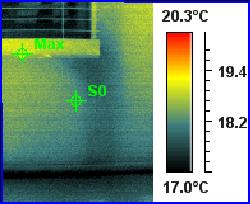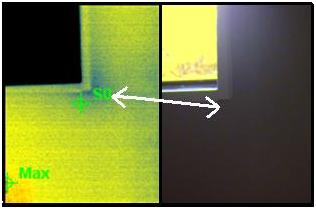How to eliminate condensation on windows
This is one of the most common questions we get asked… and the answer is actually straight forward. Click Here to see how you can do it within minutes!
Let me start by saying that I’m in NZ houses almost every day of the week testing for moisture, or inspecting houses for ‘leaks’ under windows. Well, in many cases they are not actually leaks coming in from the outside (i.e. Weather tightness issues), it’s condensation pouring down the windows and straight into the walls! This is especially the case for windows with no condensation channels, or situations where the miter joints have failed. Even some homes with double glazed windows still get moisture beading on the aluminum frame due to a high moisture content in the air.
“How do you stop condensation?”
Click Here to see how you reduce condensation within minutes!
If you have single glazed windows, then you’re in for an uphill battle right from the get go. Homes with single glazing will always be susceptible to moisture and damp issues if there is no air circulation. A classic example of ‘lack of air circulation’ is when a home owner calls telling us their basement is damp. If you smell damp in the basement of your house, simply ‘test’ putting a dehumidifier in the room. If the smell fades away after a few days, then you know it’s simply moist air. If the smell remains (providing it’s not a permanent smell in carpet), then you could have other moisture/drainage related problems, especially if the external walls are built into the side of a hill.
Back to stopping window condensation…
If you and/or your children are sleeping in a room with condensation on the windows, you should put a stop to this asap, purely for health purposes if anything. If you or someone in your home gets asthma, or generally gets sick over winter, then you need to do your best to begin a logical ‘process of elimination’ of what could be causing the problem. Here’s a few options to test…
- Put a dehumidifier in the room… if it fills with water in 24hrs or less, you know the air is very moist! Consider getting some kind of system installed that works 24/7 to keep your home dry and healthy (HRV, DVS, Moisture Master etc).
- If the dehumidifier doesn’t work, go for a holiday somewhere and sleep in a different environment for 5 days or so. Has the health condition of the person changed in a positive way? You might find it will, therefore your house is the problem.
- Are the bedroom curtains moist? They most likely will be if you have condensation. Curtains in moist rooms act like a big sponge… further introducing ‘sustainable’ damp in the room. Not good.
As a result of moisture on the back curtains (transferred from the wet windows), mould will start growing on the curtain, potentially causing further health issues! Try using this mould cleaning product on curtains… www.removehousemould.co.nz - Here is your best option… Click Here to see how you can manage and control condesation on windows within minutes!
Double glazed windows will certainly help reduce condensation, and also help to retain any heat that is introduced into the room. If you live in a damp area of NZ and are constantly getting sick, then you may have no choice but to sell up and leave! That is the extreme case I know, but many people take this option to resolve moisture related health problems almost right away. Why would you compromise your lifestyle and health, when you could be living somewhere warmer, healthier and generally a dryer environment!
In summary, NZ has moist climatic conditions over winter and there is nothing that you or I can do about part of it… but there are always ways around it, generally at a cost. Before you hit the panic button, the best low-cost place to start is with moisture testing the home to make sure the problem isn’t originating from behind the wall, which is often the case… and usually doesn’t cost much to fix providing it’s not a widespread moisture ingress isssue.








